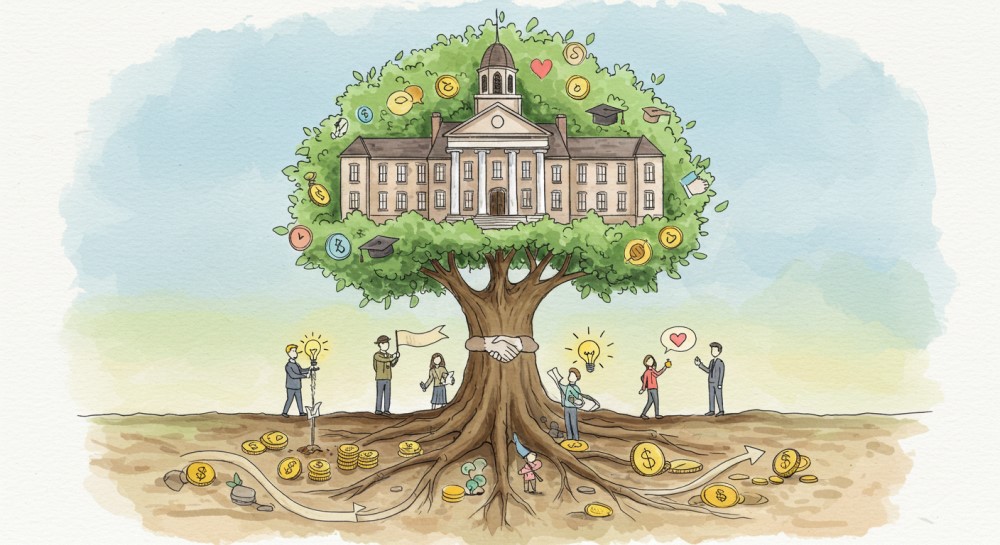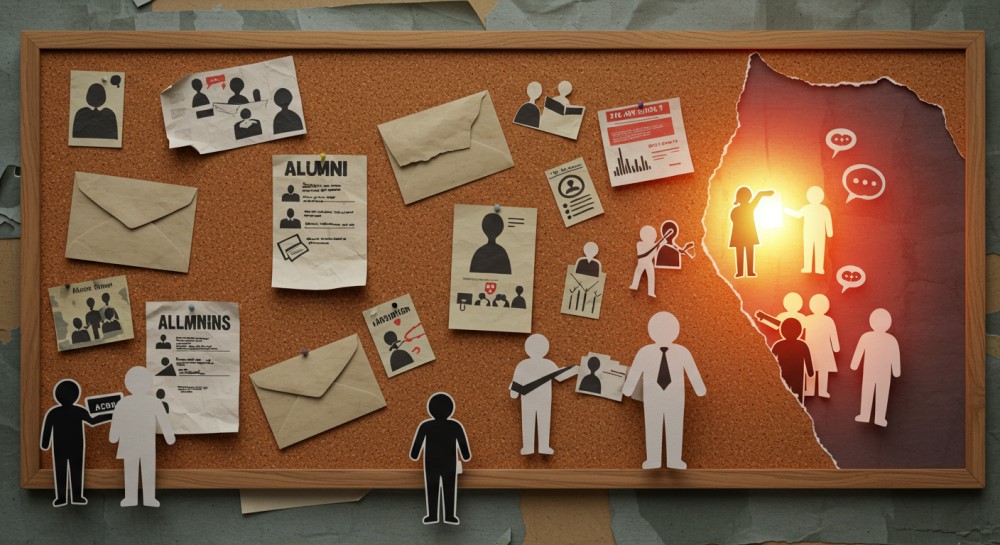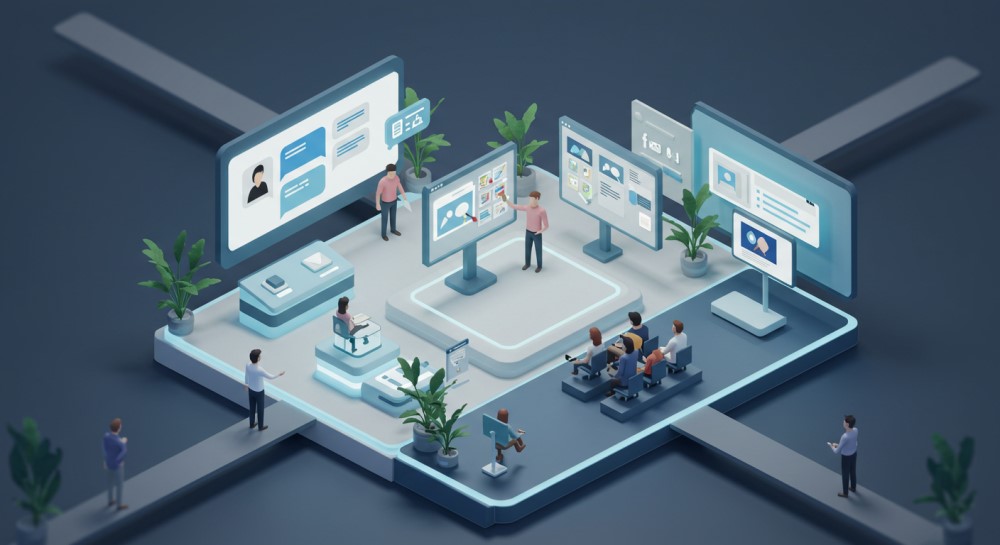
Many educational institutions and nonprofits struggle to keep pace with the changing nature of alumni fundraising and engagement. Traditional methods such as direct-mail newsletters or annual reunions have often yielded short-lived interactions and minimal long-term participation. In today’s digital world, alumni expect ongoing, meaningful communication that provides real value.
Rather than relying on one-off events or sporadic updates, institutions can now leverage digital communities to establish a dynamic, year-round connection with graduates. These platforms offer a continuous space for alumni to network, collaborate, and support each other’s personal and professional pursuits.
Beyond simply deepening relationships, such communities can also serve as effective drivers of consistent fundraising efforts, creating opportunities for both one-time and recurring donations. When executed well, a digital alumni network can forge stronger bonds, broaden institutional reach, and contribute substantially to the organisation’s goals.
1. The Challenge with Traditional Alumni Programs

A primary stumbling block for educational institutions is the event-driven approach to alumni engagement. For decades, reunions or annual galas have served as the main forums for interaction. While these gatherings can indeed be memorable, they often generate only a temporary sense of connection that quickly fades once the event concludes. Institutions relying solely on these periodic touchpoints usually see inconsistent participation and limited capacity for meaningful alumni-to-alumni interaction.
In addition, the communication style in many traditional alumni programs is usually one-directional. Institutions send newsletters, magazines, or mass emails, but there’s minimal opportunity for real-time dialogue. As a result, alumni may feel like passive recipients rather than active contributors. Ultimately, these approaches can create missed opportunities: the alumni network’s potential for mentorship, fundraising, and brand advocacy remains untapped because there’s no mechanism for genuine community-building.
2. The Power of Digital Communities
In contrast to occasional events or static websites, a digital alumni community opens the door to ongoing engagement and immediate connection. By giving members a platform to share stories, experiences, and advice, you enable real-time interactions that simply aren’t possible through annual or semi-annual communications. This continuous loop of feedback and participation cultivates an environment where alumni feel their voices are heard, and their presence is valued.
More importantly, digital communities foster a vibrant, shared identity that grows over time. When alumni see tangible benefits—career support, exclusive networking opportunities, or mentorship programs—they become more invested in the institution’s success. Consequently, there’s a deeper sense of belonging that translates to higher activity levels and strong advocacy. In essence, a well-managed online community goes beyond simply providing information; it enables the co-creation of an evolving culture that resonates with both newer and older graduates.
3. Strengthening Alumni Relationships Through Community

One of the most valuable aspects of digital platforms is their ability to enable peer-to-peer interaction, not just top-down communication from the institution to alumni. Discussion boards, topic-specific groups, and private channels let graduates connect over shared interests, experiences, or professions. This horizontal form of engagement naturally encourages deeper social bonding because alumni discover common ground and mutual goals.
For the institution, these strong connections translate into greater loyalty. When alumni see that their institution is not merely promoting its own achievements but actively facilitating discussions and networking among graduates, they perceive an ongoing commitment to their well-being. Over time, this results in an alumni population that is more likely to respond positively to volunteer opportunities, fundraising initiatives, and mentorship programmes. In short, the digital community transforms the alumni-institution relationship into a robust, multi-faceted partnership.
4. Fundraising Through Community: More Than a Donation Page
Traditional fundraising efforts often rely on broad appeals or annual giving campaigns that may not feel relevant to many alumni. By contrast, digital alumni communities present a natural, ongoing context for discussions around giving. Because members are already engaged with each other and the institution, the question of donations can be woven into conversations without seeming forced or intrusive.
Additionally, institutions can develop targeted campaigns within these communities, leveraging data on members’ interests or graduation cohorts. For instance, crowdfunding initiatives can focus on specific projects—scholarships, research funds, or facilities improvements—that resonate with particular groups. Alumni are more likely to donate when they understand precisely how their contribution will be used and when they see transparent updates on campaign progress. Moreover, offering exclusive perks or acknowledgments to contributors helps build trust. This sense of recognition further motivates alumni to give repeatedly, reinforcing a culture of continuous support rather than a one-off contribution.
5. Features That Help Communities Thrive

A successful digital alumni platform depends on incorporating the right tools and features to keep members interested and motivated. Among the most beneficial components are:
- Event hosting tools: Virtual and physical meetups, panel discussions, or Q&A sessions can be arranged easily, enabling alumni from all geographic locations to attend.
- Member directories: A searchable database of alumni can facilitate career networking, mentorship, and knowledge-sharing among graduates.
- Content hubs: Providing a central repository for updates, resources, and alumni success stories keeps everyone informed and encourages the sharing of valuable information.
- Mobile access: Many alumni have busy schedules and are on the go. Having an intuitive mobile platform ensures members remain engaged, whether they’re commuting to work or travelling.
These platform features not only drive better participation but also simplify the donation journey. With built-in payment gateways or integration with existing fundraising systems, institutions can make contributing seamless and straightforward. Ultimately, the more user-friendly and interactive the community platform, the more likely alumni will find sustained value in it—and keep coming back.
6. Comparative Table: Traditional Alumni Engagement vs. Digital Communities
Below is a side-by-side comparison that highlights how digital communities can address many of the shortcomings of traditional alumni programs:
| Engagement Factor | Traditional Approach | Digital Community Approach |
| Communication Style | One-way, periodic updates via mail or email | Interactive and continuous with two-way discussions |
| Event Attendance | In-person only, location-limited reunions | Virtual and hybrid options accessible globally |
| Networking Opportunities | Few, mostly event-based or ad-hoc | Ongoing, peer-to-peer connections via dedicated channels |
| Fundraising Effectiveness | Generalised appeals that may lack personalisation | Targeted, contextual campaigns that align with alumni interests |
| Sense of Belonging | Episodic contact leading to weak engagement | Shared identity, bolstered by year-round interactions |
This table highlights the key advantages of digital communities, such as continuous communication and contextual fundraising. By shifting from isolated, in-person events to an immersive and persistent online environment with offline interaction, institutions can capture and retain the interest of alumni in more meaningful ways.
7. Real-Life Use Cases and Success Scenarios

Many universities and colleges that have embraced private or institution-specific communities have noted a substantial increase in alumni engagement. For example, event attendance sees a boost because members are continually reminded of upcoming webinars, virtual get-togethers, or panel discussions. Higher attendance often correlates with more networking, leading alumni to cultivate both personal and professional relationships within the community.
From a fundraising standpoint, these digital spaces allow institutions to run specialised giving campaigns tied to alumni milestones—such as reunion years or departmental anniversaries. By tailoring the approach to the right audience, donation drives become more impactful. These communities also serve as a prime channel for mentorship opportunities, connecting current students with experienced alumni who can offer career guidance, internships, or referrals.
In turn, this vibrant network becomes a magnet for prospective students who see tangible evidence of a supportive alumni base. Thus, the cycle of engagement grows: active alumni attract future students, and those new graduates eventually become the next generation of committed alumni.
8. Best Practices for Building a Digital Alumni Network
Building and sustaining an effective digital alumni network requires forethought, planning, and ongoing management. Here are some best practices to ensure the success of your community:
- Start with a clear mission: Define the primary objectives of your alumni community, whether it’s to foster networking, enable mentorship, drive fundraising, or all of the above. When alumni understand the purpose, they’re more inclined to participate actively.
- Develop the right platform: Develop a user-friendly platform that balances feature-rich functionality with simplicity. Alumni should find it intuitive to navigate, join discussions, and access resources.
- Build a team experienced in digital communities: Develop an experienced team of community managers, content creators, engagement specialists, data analysts etc to ensure that members remain active and engaged.
- Co-create with alumni: Involve your graduates in the design and rollout of the platform. This participatory approach not only instills a sense of ownership but also ensures that the final product resonates with users’ real needs.
- Maintain visibility: Regularly share valuable content, updates, and announcements about the institution. Host events, encourage success stories, and introduce new features or initiatives to keep the community fresh and exciting.
By adhering to these best practices, you lay the foundation for a thriving, sustainable alumni network that benefits both members and the institution at large.
Conclusion – Digital Communities Are the Future Of Alumni Fundraising and Engagement

As higher education and nonprofit landscapes continue to evolve, digital communities stand out as a strategic asset for alumni engagement. By shifting away from one-time events and limited communication channels, institutions can establish an ongoing, supportive environment that resonates with graduates’ interests and needs.
This continuous interaction not only fosters deeper relationships among alumni but also paves the way for consistent fundraising efforts, as donors have a clearer understanding of where their contributions go and how they directly impact the institution’s mission.
Ultimately, alumni are far more than a list of past graduates; they’re a living network of advocates, mentors, and benefactors. Engaging them through a dedicated online community ensures their potential is fully realised, benefiting the institution’s reputation, financial stability, and educational outcomes. Forward-thinking organisations that make this investment are poised to strengthen alumni relations and support far into the future.
